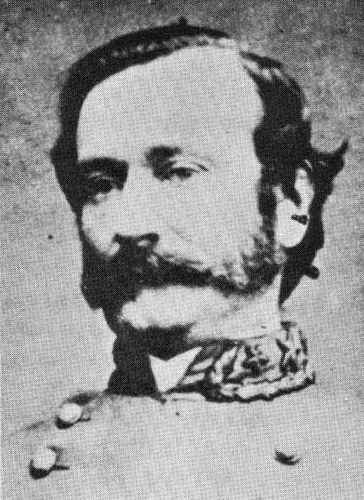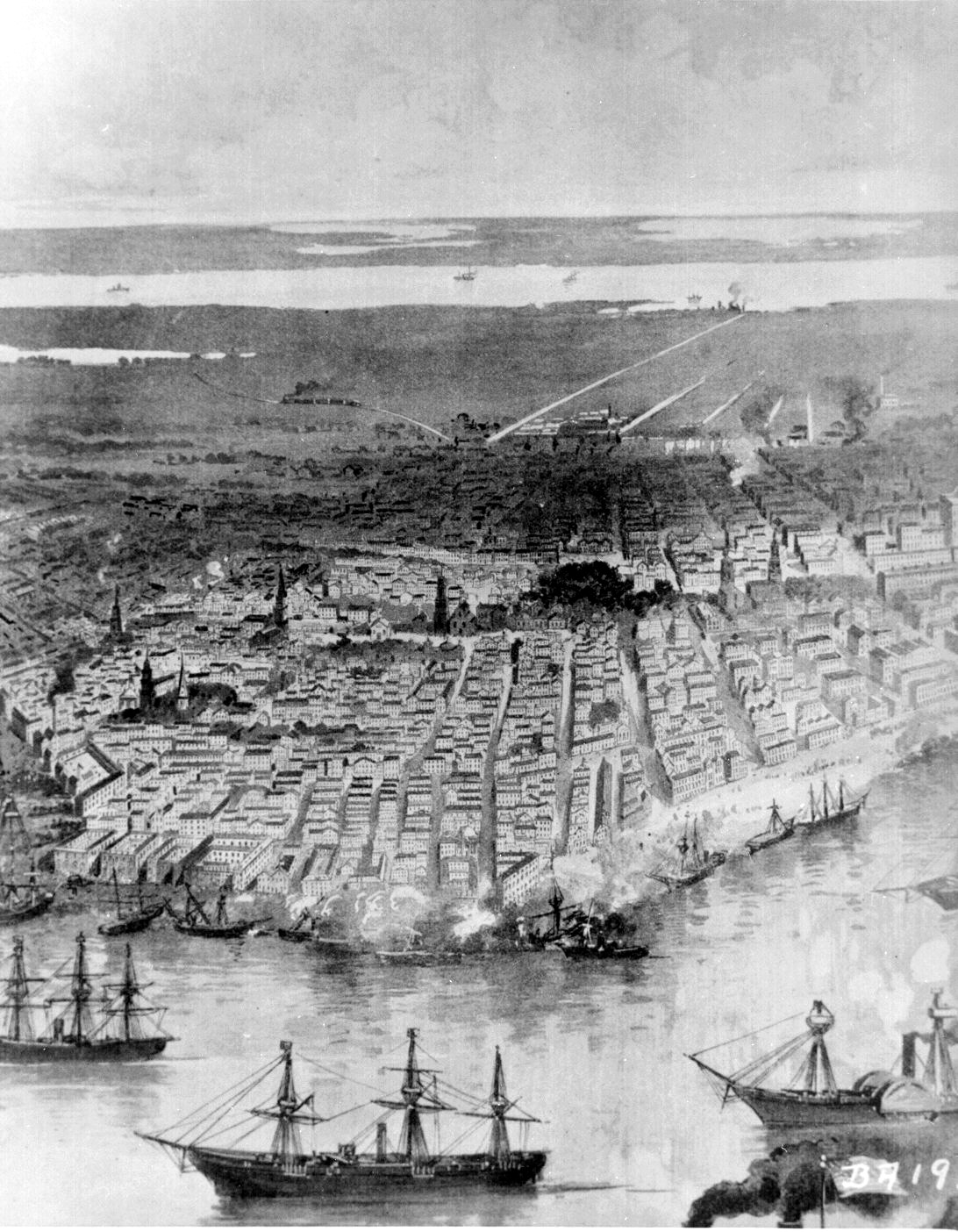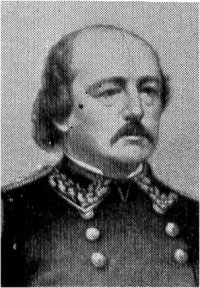The Battle of New Orleans was fought on April 25-May 1, 1862 for control of the city of New Orleans. Part of Winfield Scott's "Anaconda Plan" called for the division of the Confederacy by seizing control of the Mississippi River. One of the first steps in such operations was to enter the mouth of the Mississippi River, ascend to New Orleans and capture the city, closing off the entrance to Rebel ships. In mid-January 1862, Flag Officer David G. Farragut undertook this enterprise with his West Gulf Blokad . The way was soon open except for the two masonry forts above the Head of Passes, approximately seventy miles below New Orleans. From April 18 to April 28, Farragut bombarded and then fought his way past the forts in the Battles of Fort Jackson and St. Philip, managing to get thirteen ships up river. At noon on April 25, Farragut anchored in front of New Orleans; Forts Jackson and St. Philip, isolated and continuously bombarded by the mortar boats, surrendered on April 28. Soon afterwards soldiers under Maj.Gen Benjamin Butler occupied the city, which surrendered without fighting. The Union forces engraved "The Union Must and Shall Be Preserved" on the statue of Andrew Jackson that honored him for the Battle Of New Orleans in the War of 1812. The Commanders of the battle were David G. Farragut and Benjamin Butler for the Union, and Mansfield Lovell for the Confederacy. During the capture of NewOrleans neither the Union or the Confederacy abtained any casualties.  Gen. Mansfield Lovell  Map of Battle of New Orleans |  Battle Of New Orleans  General David Farragut  Gen. Benjamin Butler |
Images from Goggle, and Yahoo search: Images